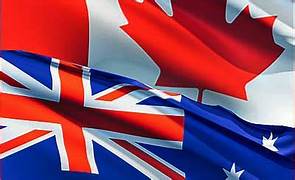Relocating from Australia to Canada is an exciting journey, but one of the most important aspects to consider is healthcare. Both countries offer universal healthcare systems, ensuring access to essential medical services, but there are significant differences in how they operate. If you’re moving from Australia to Canada, understanding how healthcare works, what is covered, and how to access services will help you transition smoothly.
Understanding Canada’s Universal Healthcare System
Like Australia, Canada has a publicly funded healthcare system, often referred to as Medicare. However, while Australia’s system is national, Canada’s healthcare is managed at the provincial and territorial level. Each province and territory has its own healthcare plan, meaning that services, wait times, and eligibility requirements can vary depending on where you live.
In Canada, basic healthcare services such as doctor visits, hospital care, and emergency services are covered by the government. However, unlike Australia’s Medicare, which provides partial subsidies for private services, Canada’s system is almost exclusively public for primary care. Private health insurance is used mainly for additional services like prescription drugs, dental, and vision care.
Health Insurance and Coverage for Newcomers
One of the biggest differences for Australian newcomers is that healthcare coverage is not immediately available in all provinces. In places like British Columbia, Ontario, and Quebec, there is a waiting period of up to three months before new residents become eligible for public healthcare. During this time, you’ll need to purchase private health insurance to cover any medical expenses.
Some provinces, like Alberta and Manitoba, provide immediate healthcare coverage upon arrival, so it’s essential to check the specific rules of your destination province before you move.
Applying for a Health Card
To access healthcare services in Canada, you must apply for a provincial health card as soon as you become eligible. The process typically involves:
- Proving residency (showing a lease agreement, utility bill, or other proof of address).
- Providing identification (passport, visa, or work/study permit).
- Filling out an application through your provincial health authority.
Once approved, your health card allows you to receive free medical services covered by the public system.
Differences in Access to Healthcare
In Australia, seeing a general practitioner (GP) is often quick and straightforward, with both bulk-billed and private options available. In Canada, however, finding a family doctor can be challenging, as there is a shortage in some provinces. Many Canadians rely on walk-in clinics or hospital emergency rooms for non-urgent care due to long wait times for family doctors.
Another key difference is in specialist care. In Australia, patients can see a specialist directly, but in Canada, you usually need a referral from a GP before booking an appointment. Wait times for specialists and elective procedures in Canada are generally longer than in Australia.
Prescription Medications
Australia’s Pharmaceutical Benefits Scheme (PBS) subsidizes prescription medications, making them more affordable. In Canada, there is no national drug coverage, and prescription costs vary depending on the province. Many Canadians rely on employer-sponsored private insurance or pay out of pocket for medications.
Conclusion
Moving from Australia to Canada requires an adjustment to a new healthcare system. While both countries offer universal healthcare, Canada’s province-based system, wait times, and limited private options may require some adaptation. To ensure a smooth transition, research your province’s healthcare policies, apply for a health card as soon as possible, and consider temporary private insurance to cover gaps in coverage.
